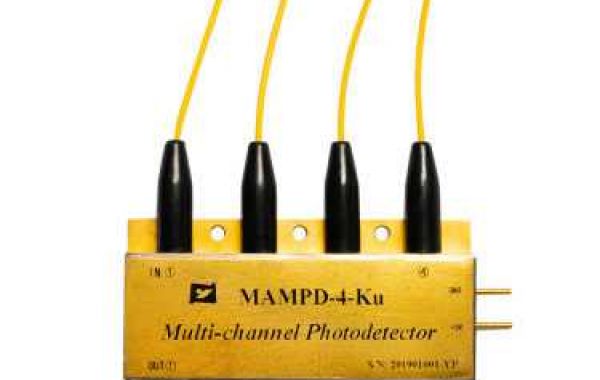Photodetectors are devices used for the detection of light – in most cases of its optical power. More specifically, photodetectors are usually understood as photon detectors, which in some way utilize the photo-excitation of electric carriers; thermal detectors are then not included by the term, and are also not treated in this article.
Photodetectors usually deliver an electronic output signal – for example, a voltage or electric current which is proportional to the incident optical power. They are thus belonging to the area of optoelectronics.
Types of Photodetectors
As the requirements for applications (see below) vary considerably, there are many types of photodetectors which may be appropriate in a particular case:
Photodiodes are semiconductor devices with a p–n junction or p–i–n structure (i = intrinsic material) (→ p–i–n photodiodes), where light is absorbed in a depletion region and generates a photocurrent. Such devices can be very compact, fast, highly linear, and exhibit a high quantum efficiency (i.e., generate nearly one electron per incident photon) and a high dynamic range, provided that they are operated in combination with suitable electronics. A particularly sensitive type is that of avalanche photodiodes, which are sometimes used even for photon counting.
Metal–semiconductor–metal (MSM) photodetectors contain two Schottky contacts instead of a p–n junction. They are potentially faster than photodiodes, with bandwidths up to hundreds of gigahertz.
Phototransistors are similar to photodiodes, but exploit internal amplification of the photocurrent. They are less frequently used than photodiodes.
Photoconductive detectors are also based on certain semiconductors, e.g. cadmium sulfide (CdS). They are cheaper than photodiodes, but they are fairly slow, are not very sensitive, and exhibit a nonlinear response. On the other hand, they can respond to long-wavelength infrared light.
Phototubes are vacuum tubes or gas-filled tubes where the photoelectric effect is exploited (→ photoemissive detectors).
Photomultipliers are a special kind of phototubes, exploiting electron multiplication processes for obtaining a much increased responsivity. They can also have a high speed and large active area. Some of them are based on multichannel plates; they can be substantially more compact than traditional photomultipliers.
Research is performed on novel photodetectors based on carbon nanotubes (CNT) or graphene, which can offer a very broad wavelength range and a very fast response. Ways for integrating such devices into optoelectronic chips are explored.
These devices are all based on the internal or external photoelectric effect; photoemissive detectors belong to the latter category.
Various kinds of photodetectors can be integrated into devices like power meters and optical power monitors. Others can be made in the form of large two-dimensional arrays, e.g. for imaging applications. They may be called focal plane arrays. For example, there are CCD and CMOS sensors which are used mainly in cameras.
We are NEON, we are a manufacturer of high speed photodetector, we provide high-quality high-speed photodetectors. We can offer a variety of photodiode detectors, for example, multi-channel photodetector, Mini-size Photodetector, high-speed photodetector (up to 30GHz), Amplified Microwave InGaAs Photodetector, FCPD(face-contacted) photodetector and so on. Our photodetectors are ultrafast, fiber coupling, OEM package and ROHS 2.0 certified.








